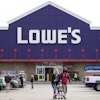
 Gary Brooks
Gary BrooksFor manufacturers, financial and competitive success can oftentimes depend on after-sales service. For service parts pricing in particular, it may seem obvious that selling a part for the optimal price is critical to increasing revenue and boosting profit margins, but too many manufacturers are still using outdated methods like Excel spreadsheets and legacy ERP systems.
For businesses, making the switch to more modern technologies for service parts pricing can increase service revenues by as much as 5 percent, and gross profit margins by upwards of 7 percent. Contrary to what many traditional manufacturers might think, these more advanced pricing technology methods actually work. Here are three reasons why:
Find Your Value Drivers
Today, more manufacturers are turning to after-sales service as a way to improve their business. And with an unpredictable durable goods market — as well as the rise of mammoth companies such as Amazon — it’s become more important than ever for competitive pricing to positively impact the bottom line.
With after-sales service now an increasingly important revenue source for manufacturers, it’s necessary to find value drivers that make a company stand out over the competition. Using modern service parts pricing technology — rather than common, yet outdated methods — can help manufacturers price items automatically based on market conditions such as demand and geography. In turn, this allows them to identify and capitalize on how to strengthen the value of individual parts to match changes in customer behavior and product demands.
Price with the Customer in Mind
No matter the industry, ask any consumer and they’ll tell you that pricing is one of the biggest factors that goes into their decision about whether to make a purchase. Professionals sometimes forget how important it is for customers to be on board with the prices you’re putting out there, and how that price relates to your company’s profit margins. Keeping prices too high will likely turn customers off, or leave them looking elsewhere for a better deal. At the same time, dropping prices too much won’t benefit your business and its revenue, since customers will be getting your products for such a bargain.
However, what if it was possible to gather feedback about pricing from your salesforce and adjust prices accordingly? Modern service parts pricing technology provides manufacturers with constant feedback from varying locations — by using a single advanced, automated system. This kind of software allows companies to change prices by region to make sure each one produces the best possible profits.
Getting Analysis Right
Since today’s after-sales service category has become so rapid and expansive, pricing decisions should be made on a second-by-second basis. This can be challenging given all the moving parts associated with not just pricing, but also the logistics of making sure service parts inventory is available where needed, and how supplementary stock is distributed — among other things.
However, instead of missing out on opportunities because of long-winded manual work and slow access to insights, manufacturers need to invest in solutions to help them keep tabs on the performance across all regions in real-time. From there, manufacturers can drill down in more specific, ad hoc ways to uncover any potential competitive areas they can exploit to drive greater results.
With pricing now more nuanced and proactive than in the past, it has become increasingly complex. But this new model of pricing doesn’t have to come with an endless stream of headaches. By investing in modern service parts pricing tools, manufacturers can achieve the best results out of their after-sales service businesses, and cut down on the hectic, manual processes that have plagued pricing for years.
Gary Brooks is CMO at Syncron.























